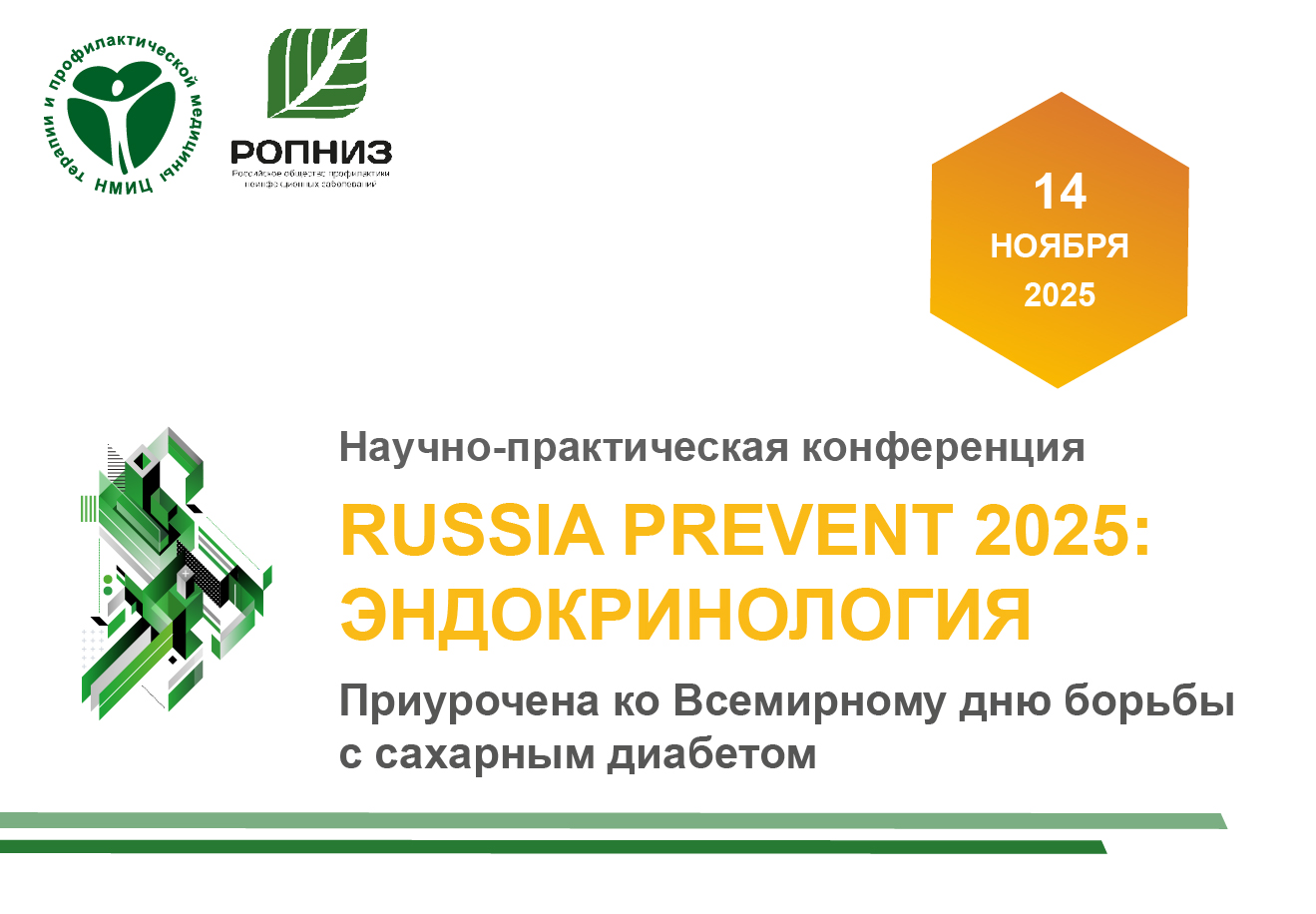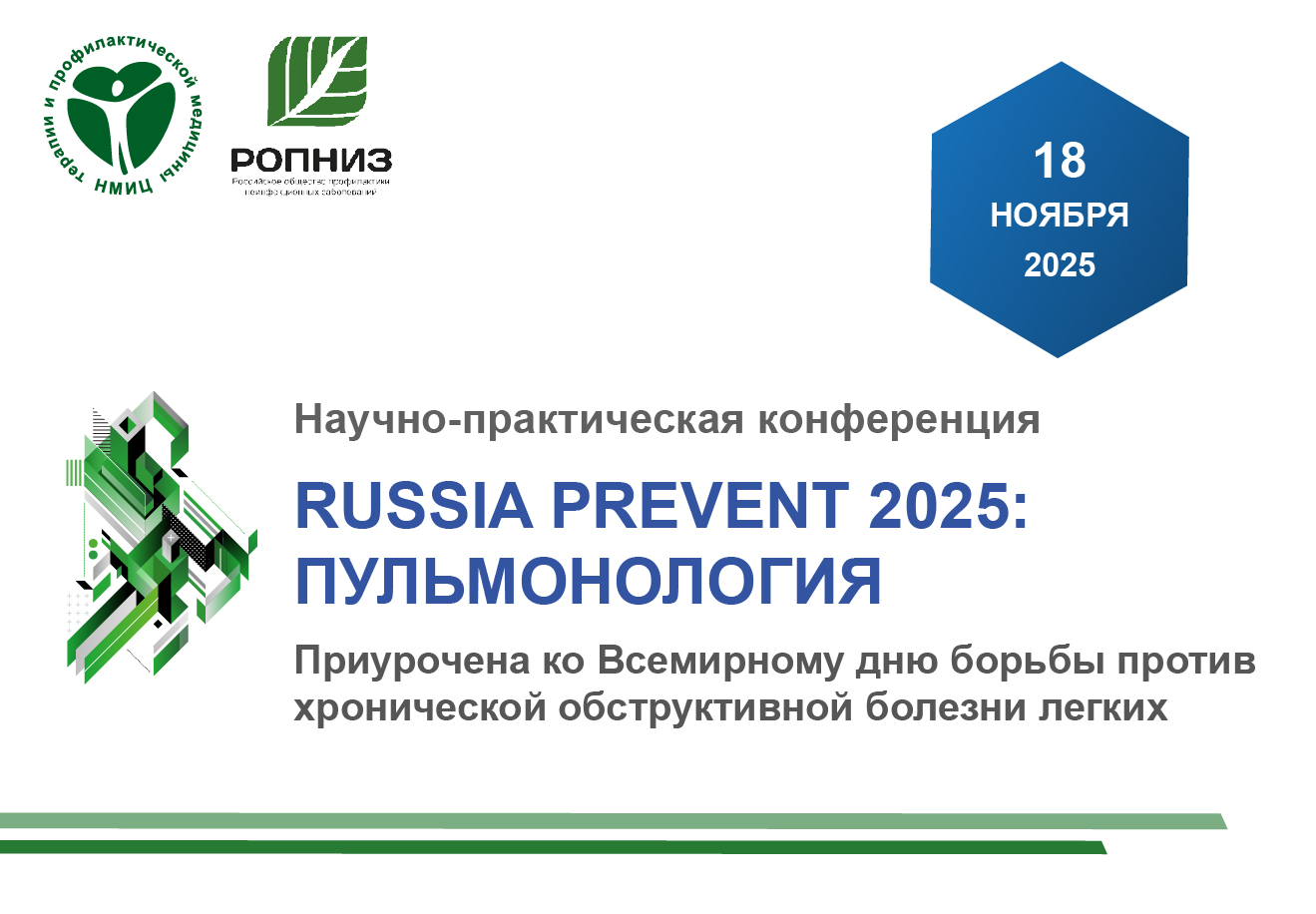The Mediterranean diet: key biologically active agents, mechanisms of action, and clinical efficacy in the context of cardiovascular prevention
https://doi.org/10.15829/1728-8800-2025-4485
EDN: SGQLOQ
Abstract
Among the proven risk factors influencing cardiovascular mortality, unhealthy diet plays a significant role. Currently, the most studied dietary pattern for its cardioprotective properties is the Mediterranean diet.
The aim of this review is to present current data on the key biologically active agents of the Mediterranean diet, their mechanisms of action, and the evidence base for their clinical efficacy in the context of cardiovascular prevention. The review for each active agent is structured into subsections, including: a) a list of plant-based foods containing the active agent; b) a summary of the agent's mechanisms of action; and c) the evidence base for its clinical efficacy.
The authors hope that the information presented in this review will be useful to primary care physicians, internists, and cardiologists and can be applied in their practice to prevent cardiovascular diseases and improve patients' quality of life.
About the Authors
K. S. SamatovaRussian Federation
Petroverigsky Lane, 10, bld. 3, Moscow, 101990
N. G. Gumanova
Russian Federation
Petroverigsky Lane, 10, bld. 3, Moscow, 101990
A. I. Korolev
Russian Federation
Petroverigsky Lane, 10, bld. 3, Moscow, 101990
A. R. Kiselev
Russian Federation
Petroverigsky Lane, 10, bld. 3, Moscow, 101990
A. Yu. Gorshkov
Russian Federation
Petroverigsky Lane, 10, bld. 3, Moscow, 101990
O. M. Drapkina
Russian Federation
Petroverigsky Lane, 10, bld. 3, Moscow, 101990
References
1. Borisova SV, Galimova RA. Food hygiene and its impact on diseases of the cardiovascular system. Bulletin of Science. 2025; 3(1):125771. (In Russ.)
2. Akasheva DU, Drapkina OM. Mediterranean Diet: Origin History, Main Components, Evidence of Benefits and Feasibility to Adapt to the Russian Reality. Rational Pharmacotherapy in Cardiology. 2020;16(2):30716. (In Russ.) doi:10.20996/1819644620200403. EDN: VFPXRL.
3. Menotti A, Puddu PE, Keys A. The Mediterranean Diet and the Seven Countries Study: A Review. J Cardiovasc Dev Dis. 2025;12(4):141. doi:10.3390/jcdd12040141.
4. Dubinina YuA, Remizov GM. Comparative Assessment of Nitrate Contamination in Food Products. Amur Scientific Bulletin. 2016;1:707. (In Russ.)
5. Ocheret NP, Tuguz FV. Content of nitrates in foodstuff and their influence on health of the person. Bulletin of Adygea State University. Series 4: Natural Sciences, Mathematics, and Technical Sciences. 2018;2(221). (In Russ.) О
6. Angelico F, Baratta F, Coronati M, et al. Diet and metabolic syndrome: A narrative review. Intern Emerg Med. 2023;18:100717. doi:10.1007/s11739023032267.
7. CastroQuezada I, RománViñas B, SerraMajem L. The Mediterranean diet and nutritional adequacy: a review. Nutrients. 2014;6:23148. doi:10.3390/nu6010231.
8. SánchezTainta A, Zazpe I, BesRastrollo M, et al. PREDIMED Study Investigators. Nutritional adequacy according to carbohydrates and fat quality. Eur J Nutr. 2016;55:93106. doi:10.1007/s0039401408283.
9. Kalaycıoğlu Z, Erim FB. Nitrate and Nitrites in Foods: Worldwide Regional Distribution in View of Their Risks and Benefits. J Agric Food Chem. 2019;67(26):720522. doi:10.1021/acs.jafc. 9b01194.
10. Gumanova NG. The significance of exogenous nitrate and nitrite of plant origin for vascular health. Russian Journal of Preventive Medicine. 2024;27(11):1416. (In Russ.) doi:10.17116/profmed202427111141.
11. Bogdanova NL, Gumanova NG, Kiselev AR, et al. Pharmacokinetic study and phytochemical analysis of beetroot powder as an initial stage of the development of an NOboosting formulation as a food supplement with cardioprotective properties and potential donor of nitric oxide. Russian Open Medical Journal. 2024;13:e0410. doi:10.15275/rusomj.2025.0104.
12. Gumanova NG. Nitric oxide and its circulating NOx metabolites, their role in human body functioning and cardiovascular death risk prediction (part I). Russian Journal of Preventive Medicine. 2021;24(9):1029. (In Russ.) doi:10.17116/profmed202124091102.
13. PinaffiLangley ACDC, Dajani RM, Prater MC, et al. Dietary Nitrate from Plant Foods: A Conditionally Essential Nutrient for Cardiovascular Health. Adv Nutr. 2024;15(1):100158. doi:10.1016/j.advnut.2023.100158.
14. Wlosinska M, Nilsson A.C, Hlebowicz J, et al. The effect of aged garlic extract on the atherosclerotic process — a randomized doubleblind placebocontrolled trial. BMC Complement Med Ther. 2020;20(1):132. doi:10.1186/s1290602002932562.
15. Ashor AW, Lara J, Siervo M. Mediumterm effects of dietary nitrate supplementation on systolic and diastolic blood pressure in adults: a systematic review and metaanalysis. J of Hypertension. 2017;35(7):13539. doi:10.1097/HJH.0000000000001305.
16. Davis CR, Hodgson JM, Woodman R, et al. A Mediterranean diet lowers blood pressure and improves endothelial function: results from the MedLey randomized intervention trial. Am J Clin Nutr. 2017;105(6):130513. doi:10.3945/ajcn.116.146803.
17. Liu S, Liu FC, Li JX, et al. Association between Fruit and Vegetable Intake and Arterial Stiffness: The ChinaPAR Project. Biomed. Environ. Sci. 2023;36:111322. doi:10.3967/BES2023.143.
18. Jiang W, Zhang J, Yang R, et al. Association of urinary nitrate with diabetes complication and diseasespecific mortality among adults with hyperglycemia. J Clin Endocrinol Metab. 2023; 108(6):131829. doi:10.1210/clinem/dgac741.
19. Gumanova NG, Deev AD, Zhang W, et al. Serum nitrite and nitrate levels, NOx, can predict cardiovascular mortality in the elderly in a 3year followup study. Biofactors. 2017;43(1):829. doi:10.1002/biof.1321.
20. Gumanova NG, Deev AD, Kots AY, et al. Elevated levels of serum nitrite and nitrate, NOx, are associated with increased total and cardiovascular mortality in an 8year followup study. Eur J Clin Invest. 2019;49(3):e13061. doi:10.1111/eci.13061.
21. Gumanova NG, Bogdanova NL, Metelskaya VA, et al. Serum biomarkers, including nitric oxide metabolites (NOx), for prognosis of cardiovascular death and acute myocardial infarction in an ESSERF casecontrol cohort with 6.5year follow up. Sci Rep. 2022;12(1):18177. doi:10.1038/s4159802222367x.
22. Aung T, Halsey J, Kromhout D, et al. Omega3 Treatment Trialists’ Collaboration. Associations of Omega3 Fatty Acid Supplement Use With Cardiovascular Disease Risks: Metaanalysis of 10 Trials Involving 77 917 Individuals. JAMA Cardiol. 2018;3(3):22534. doi:10.1001/jamacardio.2017.5205.
23. Blades F, Yazici AT, Cater RJ, et al. MFSD2A in Focus: the Molecular Mechanism of Omega3 Fatty Acid Transport. Physiology (Bethesda). 2025;40(5):0. doi:10.1152/physiol.00068.2024.
24. Xu R, Molenaar AJ, Chen Z, et al. Mode and Mechanism of Action of Omega3 and Omega6 Unsaturated Fatty Acids in Chronic Diseases. Nutrients. 2025;17(9):1540. doi:10.3390/nu17091540.
25. Oleszczuk J, Oleszczuk L, Siwicki AK, et al. Biological effects of conjugated linoleic acids supplementation. Pol J Vet Sci. 2012;15(2):4038. doi:10.2478/v101810120063x.
26. Badawy S, Liu Y, Guo M, et al. Conjugated linoleic acid (CLA) as a functional food: Is it beneficial or not? Food research international (Ottawa, Ont.). 2023;172:113158. doi:10.1016/j.foodres.2023.113158.
27. MedinaRemón A, Casas R, TressserraRimbau A, et al. PREDIMED Study Investigators. Polyphenol intake from a Mediterranean diet decreases inflammatory biomarkers related to atherosclerosis: a substudy of the PREDIMED trial. Br J Clin Pharmacol. 2017;83:11428. doi:10.1111/bcp.12986.
28. Azarova OV, Galaktionova LP. Flavonoids: Mechanism of Antiinflammatory Action. Chemistry of Plant Raw Materials. 2012;(4):6178. (In Russ.)
29. Mirrakhimov JA, Ergasheva NO. The use of phytotherapy in the treatment of cardiovascular diseases. Tashkent, Uzbekistan. Academic research in educational sciences. 2024;5(78):1809. (In Russ.)
30. Gröne M, Sansone R, Höffken P, et al. Cocoa Flavanols Improve Endothelial Functional Integrity in Healthy Young and Elderly Subjects. J Agric Food Chem. 2020;68:18716. doi:10.1021/acs. jafc.9b02251.
31. Besednova NN, Andryukov BG, Zaporozhets TS. Polyphenols Sourced from terrestrial and marine plants as coronavirus reproduction inhibitors. Antibiotics and chemotherapy. 2021;66(34):6281. (In Russ.) doi:10.37489/02352990202166346281.
32. da Cunha FCB, Cortez GB, Pucci IM, et al. Effects of the Flavonoid Diosmin on Post Exercise Muscle Soreness — A Randomized Controlled Trial. J Diet Suppl. 2025;16:122. doi:10.1080/19390211.2025.2547167.
33. GarciaYu IA, GarciaOrtiz L, GomezMarcos MA, et al. Effects of CocoaRich Chocolate on Blood Pressure, Cardiovascular Risk Factors, and Arterial Stiffness in Postmenopausal Women: A Randomized Clinical Trial. Nutrients. 2020;12:1758. doi:10.3390/nu12061758.
34. Kareva EN and Smetnik AA. Estrogenlike and antioxidant properties of resveratrol in clinical pharmacology and therapeutic use. Obstetrics and Gynecology. 2021;(12):3748. (In Russ.)
35. doi:10.18565/aig.2021.12.3748.
36. Ye H, Sun M, Luo W, et al. Identification of foam cell like M2 macrophages, AEBP1 biomarkers, and resveratrol as potential therapeutic in MASLD using Ecotyper and WGCNA. Sci Rep. 2025;15(1):30233. doi:10.1038/s41598025151916.
37. Pedotti S, Ferreri L, Granata G, et al. Inclusion Complex of a Cationic MonoCholineβCyclodextrin Derivative with Resveratrol: Preparation, Characterization, and WoundHealing Activity. Int J Mol Sci. 2025;26(14):6911. doi:10.3390/ijms26146911.
38. Bobrysheva TN, Anisimov GS, Zolotoreva MS, et al. Polyphenols as promising bioactive compounds. Voprosy pitaniia [Problems of Nutrition]. 2023;92(1):92107. (In Russ.) Бобрышева Т. Н., Анисимов Г. С., Золоторева М. С. и др. Полифенолы как перспективные биологически активные соединения. Вопросы питания. 2023;92(1):92107. doi:10.33029/00428833202392192107.
39. Damay VA, Ivan I. Resveratrol as an Antiinflammatory Agent in Coronary Artery Disease: A Systematic Review, MetaAnalysis and MetaRegression. Chin J Integr Med. 2024;30(10):92737. doi:10.1007/s1165502436650.
40. Gonçalinho GHF, Roggerio A, Goes MFDS, et al. Comparison of Resveratrol Supplementation and Energy Restriction Effects on Sympathetic Nervous System Activity and Vascular Reactivity: A Randomized Clinical Trial. Molecules. 2021;26:3168. doi:10.3390/molecules26113168.
41. Mukamal K, Lazo M. Alcohol and cardiovascular disease. BMJ. 2017;356:j1340. doi:10.1136/bmj.j1340.
42. Piano MR, Marcus GM, Aycock DM, et al. Alcohol Use and Cardiovascular Disease: A Scientific Statement From the American Heart Association. Circulation. 2025;152(1):e721. doi:10.1161/CIR.0000000000001341.
43. Drouka A, Ntetsika KD, Brikou D, et al. Associations of moderate alcohol intake with cerebrospinal fluid biomarkers of Alzheimer's disease: data from the ALBION study. Eur J Nutr. 2025;64(3):142. doi:10.1007/s00394025036518.
44. Gao X, Hu S, Liu Y, et al. Dietary Fiber as Prebiotics: A Mitigation Strategy for Metabolic Diseases. Foods. 2025;14(15):2670. doi:10.3390/foods14152670.
45. Ivanov AA, Troshina IA, Golubeva TI, et al. Shortchain fatty acids: metabolism, functions and diagnostic capacity in metabolic disorders. Perm Medical Journal. 2024(6);10919. (In Russ.) doi:10.17816/pmj416109119.
46. Drapkina OM, Kaburova AN. Gut Microbiota Composition and Metabolites as the New Determinants of Cardiovascular Pathology Development. Rational Pharmacotherapy in Cardiology. 2020;6(2):27785. (In Russ.) Драпкина О. М., Кабурова А. Н. Состав и метаболиты кишечной микробиоты как новые детерминанты развития сердечнососудистой патологии. Рациональная Фармакотерапия в Кардиологии 2020;6(2):27785. doi:10.20996/1819644620200402. EDN: DDLZKV.
47. Muralitharan R, Marques FZ. Dietrelated gut microbial metabolites and sensing in hypertension. J Hum Hypertens. 2021; 35(2):1629. doi:10.1038/s4137102003883.
48. Jama HA, Snelson M, Schutte AE, et al. Recommendations for the Use of Dietary Fiber to Improve Blood Pressure Control. Hypertension. 2024;81(7):14509. doi:10.1161/HYPERTENSIONAHA.123.22575.
49. Demidova TYu, Korotkova TN, Kochina AS. Dietary fiber is a reliable and apparent element of treatment for patients with type 2 diabetes mellitus and cardiovascular diseases: an easy solution to a complicated problem. Meditsinskiy Sovet. 2022;16(10):1049. (In Russ.) doi:10.21518/2079701X20221610104109.
50. Simon LA, Gayst S, Balasubramaniam S, et al. Longterm treatment of hypercholesterolaemia with a new palatable formulation of guar gum. Atherosclerosis. 1982;45(1):1018. doi: 10.1016/00219150(82)901757.
51. Minekus M, Jelier M, Xiao J, et al. Effect of Partially Hydrolyzed Guar Gum (PHGG) on the Bioaccessibility of Fat and Cholesterol. Biosci Biotechnol Biochem. 2005;69(5):9328. doi:10.1271/bbb.69.932.
Supplementary files
What is already known about the subject?
- The composition of the Mediterranean diet was studied.
- The mechanism of action of several components of the Mediterranean diet was discovered.
- The benefits of this diet for vascular health were demonstrated, and the anti-atherosclerotic and anti-inflammatory properties of the Mediterranean diet were established.
What might this study add?
- Current information on the mechanisms of action and clinical efficacy of the main biologically active agents of the Mediterranean diet is presented and structured.
- The role of alcohol in the Mediterranean diet is discussed, and the results of clinical studies are critically analyzed.
- Promising approaches for cardioprotective diet standards are highlighted.
Review
For citations:
Samatova K.S., Gumanova N.G., Korolev A.I., Kiselev A.R., Gorshkov A.Yu., Drapkina O.M. The Mediterranean diet: key biologically active agents, mechanisms of action, and clinical efficacy in the context of cardiovascular prevention. Cardiovascular Therapy and Prevention. 2025;24(9):4485. (In Russ.) https://doi.org/10.15829/1728-8800-2025-4485. EDN: SGQLOQ

























































